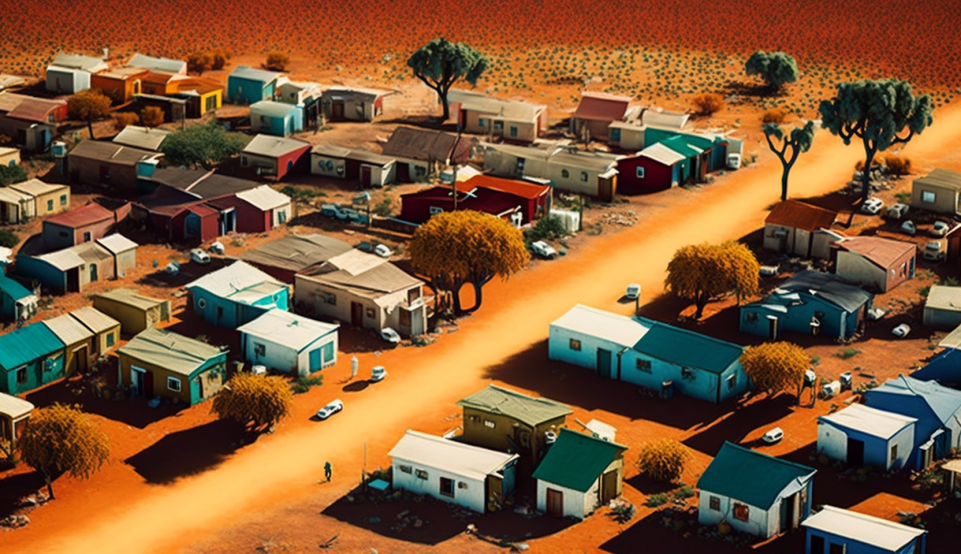
Drought is a natural disaster that is characterized by an extended period of dry weather conditions that can result in water shortages, crop failures, and adverse impacts on the environment, economy, and people’s livelihoods. In South Africa, drought is a recurrent problem that affects many parts of the country. Droughts can be classified into four different types, namely meteorological, hydrological, agricultural, and socioeconomic droughts. In this article, we will discuss each of these types of drought in detail.
What are The 4 Types of Drought?
Meteorological drought
Meteorological drought is a type of drought that is characterized by a prolonged period of below-average precipitation or rainfall. It occurs when the amount of rainfall in a region is insufficient to meet the normal water requirements of crops, vegetation, and livestock. This type of drought is usually caused by factors such as changes in global weather patterns, climate change, and El Niño.
Hydrological drought
Hydrological drought occurs when there is a prolonged period of below-average surface and groundwater availability in a region. It is caused by a lack of precipitation, high temperatures, and increased evaporation rates. This type of drought can result in reduced streamflow, lower groundwater levels, and reduced water storage capacity in reservoirs and dams.
Agricultural drought
Agricultural drought occurs when there is a prolonged period of below-average moisture levels in the soil. It affects the growth and yield of crops and can lead to crop failure, reduced agricultural productivity, and food shortages. This type of drought can be caused by factors such as low rainfall, high temperatures, and soil moisture deficits.
Socioeconomic drought
Socioeconomic drought occurs when the impacts of drought are felt on the economy and people’s livelihoods. It can be caused by factors such as reduced crop yields, increased food prices, decreased water availability, and reduced employment opportunities. Socioeconomic drought can also lead to increased poverty, migration, and social instability.
Meteorological Drought
Meteorological drought is the most common type of drought in South Africa. It occurs in regions where there is a prolonged period of below-average rainfall. The severity of meteorological drought is determined by comparing current rainfall patterns with historical averages. This type of drought is usually measured using the Standardized Precipitation Index (SPI) or the Palmer Drought Severity Index (PDSI).
The impact of meteorological drought in South Africa can be severe, with reduced water availability, lower crop yields, and increased food prices. The country has experienced several severe meteorological droughts in recent years, with the most notable being the drought that occurred between 2014 and 2018.
Hydrological Drought
Hydrological drought occurs when there is a prolonged period of below-average surface and groundwater availability. This type of drought is caused by a lack of precipitation, high temperatures, and increased evaporation rates. Hydrological drought can result in reduced streamflow, lower groundwater levels, and reduced water storage capacity in reservoirs and dams.
The impact of hydrological drought in South Africa can be severe, with reduced water availability for domestic, agricultural, and industrial use. The country has experienced several severe hydrological droughts in recent years, with the most notable being the drought that occurred between 2015 and 2018.
Agricultural Drought
Agricultural drought occurs when there is a prolonged period of below-average moisture levels in the soil. It affects the growth and yield of crops and can lead to crop failure, reduced agricultural productivity, and food shortages. This type of drought can be caused by factors such as low rainfall, high temperatures, and soil moisture deficits. The impact of agricultural drought in South Africa can be severe, with reduced crop yields, increased food prices, and food shortages.
Socioeconomic Drought
Socioeconomic drought is another type of drought that impacts the economy and social welfare of the affected region. This type of drought is usually not caused by a lack of rainfall, but rather by a combination of factors such as poor governance, inadequate infrastructure, and socioeconomic conditions. Socioeconomic drought can cause food and water shortages, which can lead to malnutrition and other health problems. It can also result in increased poverty, loss of livelihoods, and social unrest. The most vulnerable groups affected by socioeconomic drought include the poor, women, and children. In South Africa, socioeconomic droughts have been prevalent in rural areas, where poverty and inadequate infrastructure are common.
Conclusion
Drought is a significant natural disaster that can have devastating impacts on the environment, economy, and social welfare of affected regions. In South Africa, droughts are a frequent occurrence, and different types of droughts can have varying impacts on the country’s different sectors. Meteorological drought is the most common type of drought in South Africa, and it results in a lack of rainfall, which impacts water resources, agriculture, and biodiversity. Hydrological drought, on the other hand, impacts water resources, particularly surface, and groundwater, leading to water scarcity, and reducing water availability for households, agriculture, and industry. Agricultural drought affects crop yields and food production, leading to food insecurity and increased food prices. Finally, socioeconomic drought is driven by inadequate governance, infrastructure, and socioeconomic conditions and affects the most vulnerable populations, particularly in rural areas.
To address the different types of droughts, the South African government, along with the private sector and civil society, should implement comprehensive strategies to increase water conservation and efficiency, develop and maintain infrastructure, promote the use of drought-resistant crops, and improve governance and socioeconomic conditions. The implementation of such strategies will help mitigate the negative impacts of droughts on South Africa’s environment, economy, and social welfare. Additionally, it is crucial to ensure that the most vulnerable groups are taken into account in drought management and response plans.
